8 Techniques You Can Use to Help Children Relax

The fact that children are young and look so small doesn’t mean there aren’t times that they’ll need to relax, just like adults. This can be caused by different factors, mainly when they start going to school and they have to face a lot of new situations. Sometimes, a child will need to relax, and knowing how to relax without their parents’ help can teach them how to calm down and deal with difficulties independently in the future.
5-Minute Crafts wants to share several relaxation techniques for children with you. Some of them are done just using breathing techniques and lots of imagination, and others, using elements that you surely have at home.
1. Flower and candle technique for concentration and attention
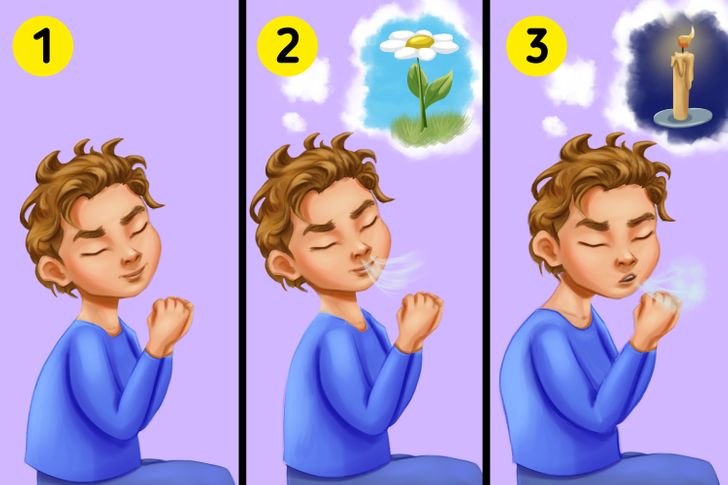
- Ask the child to close both hands into a fist and also to close their eyes. They should imagine that in their right fist they have a lit candle and in their left fist a flower in the color and size of their choice.
- Now, encourage the child to inhale deeply, pretending to smell the flower. Then, encourage them to exhale all the air, just enough to blow out the candle. Repeat these deep breaths 6 times.
2. Lazy cat technique to relax arms and shoulders
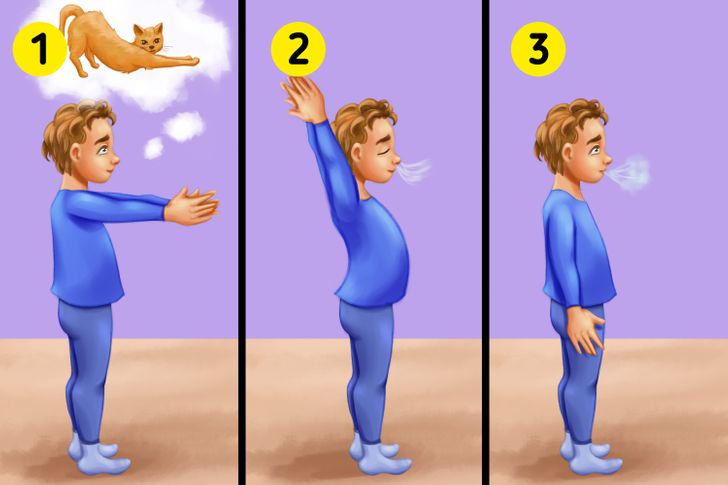
- Ask the child to close their eyes, take a deep breath, and imagine they are a lazy cat. This is also known as the Koeppen technique.
- Now, have the child raise their arms above their head and stretch them as far back as they can, feeling their shoulders tighten.
- Finally, let them drop their arms to the sides of their body, completely relaxed.
3. Turtle technique for releasing muscle tension and relieving anger
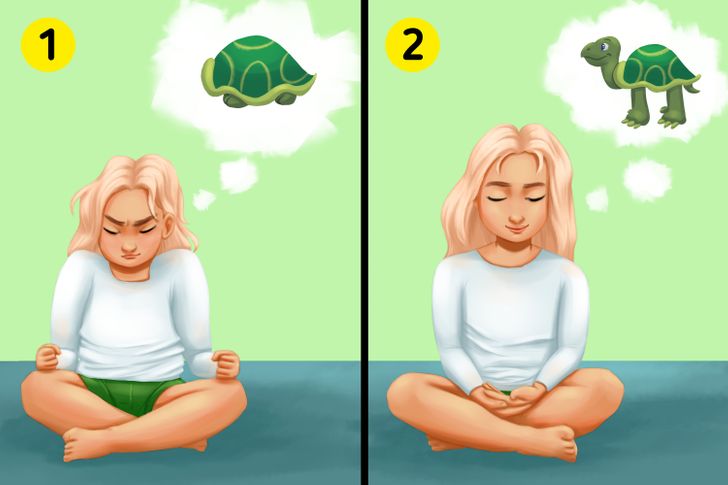
- Ask the child to imagine that they are a turtle entering their shell, pulling their shoulders toward their ears, and tensing their body.
- Have the child count to 10 and slowly relax their shoulders and body, returning to their original position.
4. Balloon technique
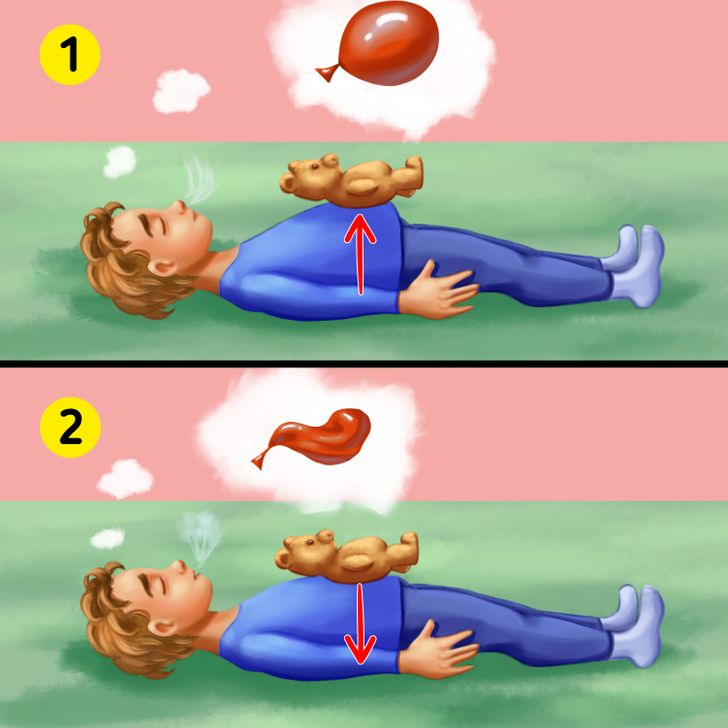
- Ask the child to lie on their back and place a stuffed animal on their stomach. They should inhale deeply, and count to 4 in their head, pretending to be a balloon that inflates. The goal is to try to inflate their belly as much as possible so that the doll rises.
- Now, they should exhale, mentally counting to 4, imagining that there is a balloon that is deflating and deflating the belly so that the doll moves down as well.
5. Lemon technique to relax arms and hands
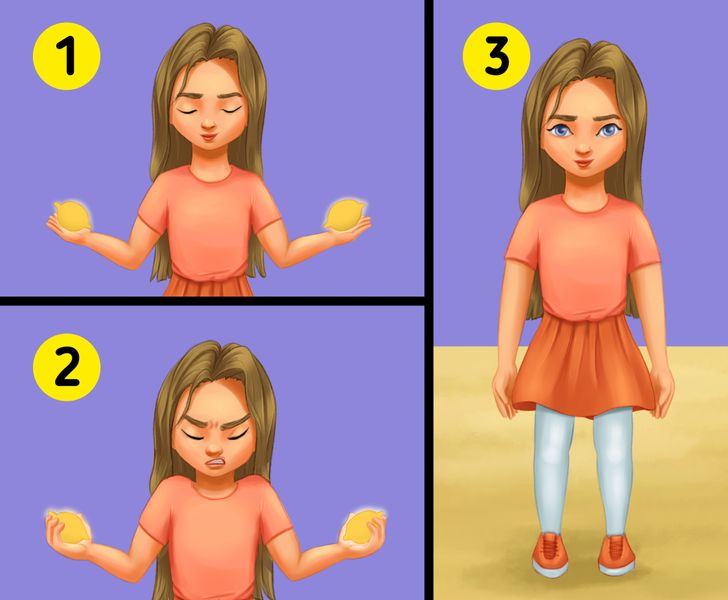
- Ask the child to imagine holding a lemon in each hand. Tell them to squeeze their hands, as if they were going to squeeze them to extract all the juice.
- Now, tell them to relax their hands and to open them to drop the imaginary lemons.
6. Give them a mandala to color
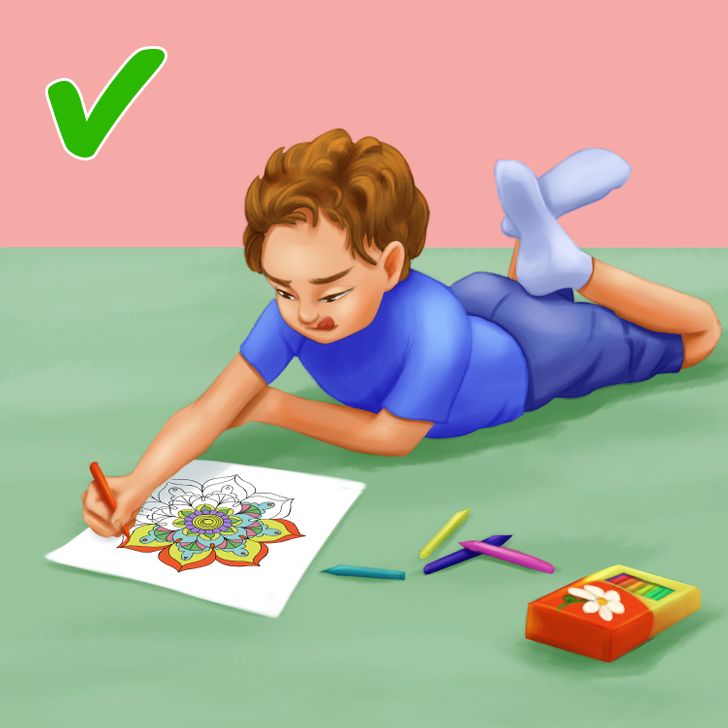
Having several mandalas to offer to children when they’re feeling tense is always useful. They can be used from the age of 3, since you don’t need to know how to draw to make use of these. Besides, it is possible to get them ready to paint. These drawings are great allies in helping children to relax, helping them focus, improving their attention skills, and enabling them to regain their calm by unleashing their creativity.
7. Make anti-stress balls
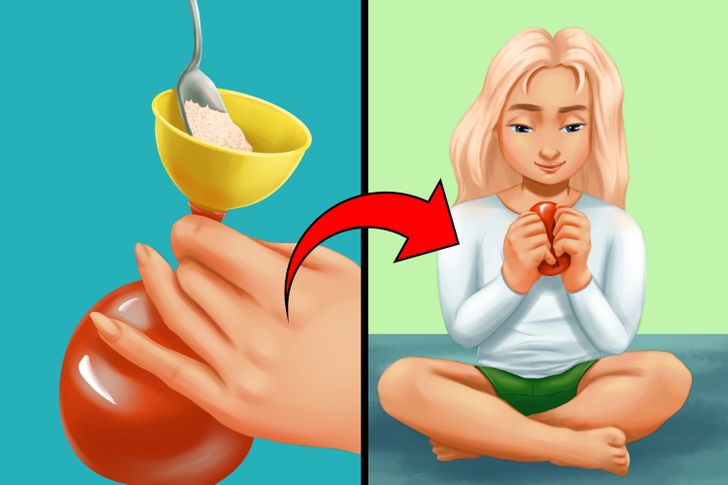
To obtain an anti-stress ball, just fill a balloon with flour or legumes and close it with a knot. This object is ideal for children to have on hand when they need to calm down after a tantrum, for example. They simply squeeze and release the ball while inhaling and exhaling slowly as many times as they need to feel calm again.
8. Make a calming bottle
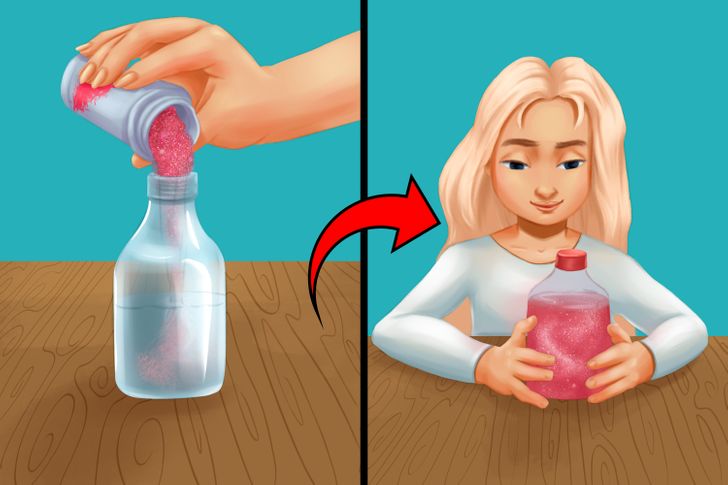
Making a calming bottle is as simple as filling 3/4 of a plastic bottle with hot water. Then you just have to add some clear glue and glitter to the mix. Once you have the result you want, super glue or hot glue the lid shut. Shake it well to mix everything together and you’re done.
These objects are extremely useful when it comes to teaching children how to handle strong emotional responses, like frustration or anger. As they watch the glitter move inside the bottle, their breathing relaxes and their emotions return to a calm state.
